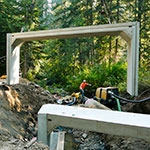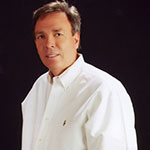
When you founded Fore Group in 2004, you were working as a management consultant. What inspired the change?
I’d always been interested in real estate. I grew up watching my sister, who is 13 years older than I am, flourish in a career as an architect, and I like the aesthetics of nice homes. So, I financed a home for a builder and paid very close attention to what he was doing. I realized it’s a pretty straightforward process and leverages a lot of the experiences I had in management consulting.
Can you talk about that a little more?
In management consulting, there’s project management, issue management, scope management, change management—and all of these things are directly transferable to construction projects, especially to high-end residential projects. The clients are also very similar. I used to deal with CEOs and CFOS, and with high-end construction projects, you’re dealing with individuals that are equally successful—they either own their own companies or work at this same level of executive positions.
What inspired you to focus on the luxury market?
The amount of effort you put into building a house is similar whether it’s lower-end or higher-end, so it made sense to focus on the higher end. So, we typically work on homes that range from 4,000 square feet to 15,000 square feet and are priced between $1.5 million and $9 million.
Was it a tough market to break into?
We didn’t have the client confidence to go straight to the super high end from the beginning, so we did some spec homes. People quickly realized we had the capability, so we got some custom work. But, as it turns out, we’re really fitted to the high end of the market.
How so?
We understand the client and vice versa. All of us at Fore Group have solid educational backgrounds, and most of us have worked in finance. As a result, we can speak to our clients at their level. They’re smart. They understand the analytics—how you’re costing the project, sequencing it, managing it. They’re interested in the details, down to the structural. And they’re very interested in design and architecture. That’s important, because there are a lot of decisions to be made: it takes around six months to complete a smaller home, as many as two years to complete a larger one. We give them all the relevant information and let them make the decisions, and they make the right ones.

“[Clients are] very interested in design and architecture. … We give them all the relevant information and let them make the decisions, and they make the right ones.”
Fotis Dulos, Founder
Has your business model changed over the years?
Not much. We started in the Farmington Valley in Connecticut, which is about 15 minutes away from Hartford. It’s a beautiful suburban area, but the goal was to eventually expand, and we did, working in New York and Rhode Island. And, while we started at a 50-50 balance between custom and spec homes, we’re now more like 75-25, but we’re still focused on the high end.
What are people looking for in luxury homes today?
The typical house around here is a traditional colonial-style home, and we do that well. But what sets us apart is our ability to do modern as well. It’s much more expensive per square foot and is harder to do. The architect is much more involved, and you can’t make mistakes in construction because everything is visible. I liken it to watching someone downhill skiing. The better they are, the easier it looks. It’s the same with homes. The simpler it looks, the harder it is.


House on Block Island, Rhode Island
Block Island, which has about 40 percent of its land set aside for conservation, was named by the Nature Conservancy as one of the 12 “last great places.” Home to just a little more than 1,000 people, it’s now the site of one of Fore Group’s most notable projects. Although the home may have a traditional exterior, inside it’s a testament to all that is modern. Designed by celebrated architect Peter Bohlin, who is perhaps best known for designing the Apple stores, the home uses steel and natural materials, including a green roof, to complement its position on a bluff some 200 feet from the ocean. “It was a great learning experience for us,” Dulos says.


